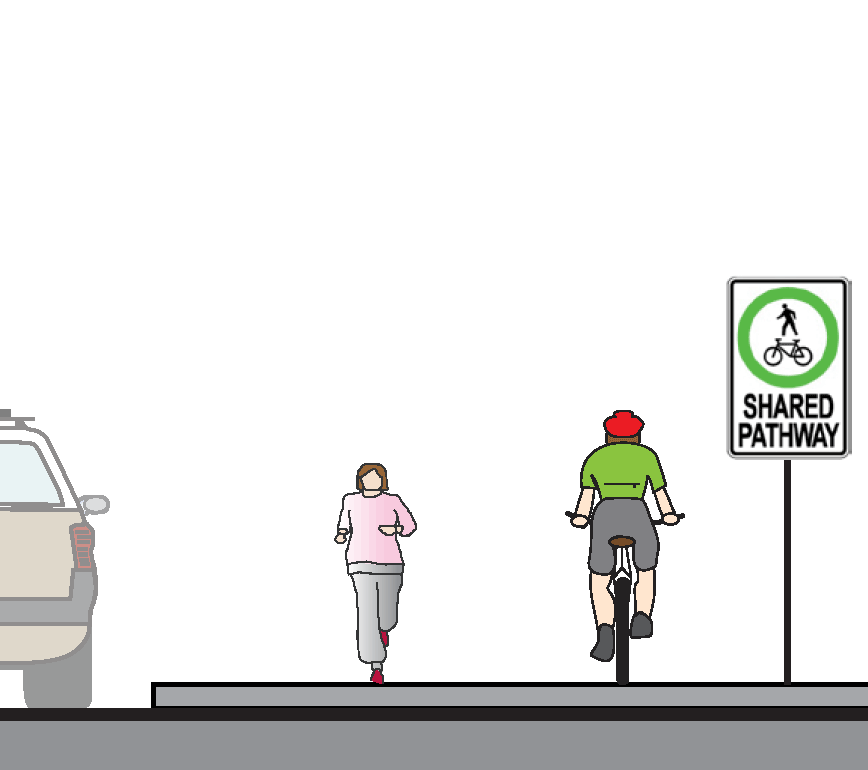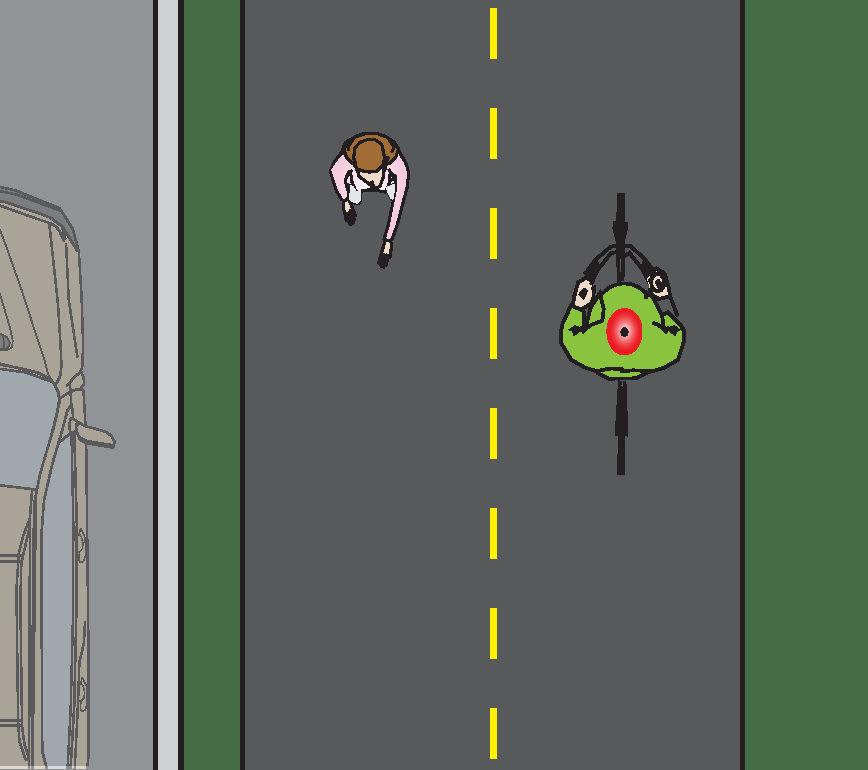Cycling Infrastructure
Cycling Infrastructure
Cycling infrastructure includes any of the elements listed below. See the Projects & Programs page for a list of new cycling infrastructure projects now underway.
Bike lane
Bike lanes are installed on moderately busy roadways with moderate speeds. Bike lanes provide cyclists with designated space, which is identified by pavement markings and signage. Bikes lanes could painted green along key corridors. When approaching intersections, division lines become dotted to allow for passing.
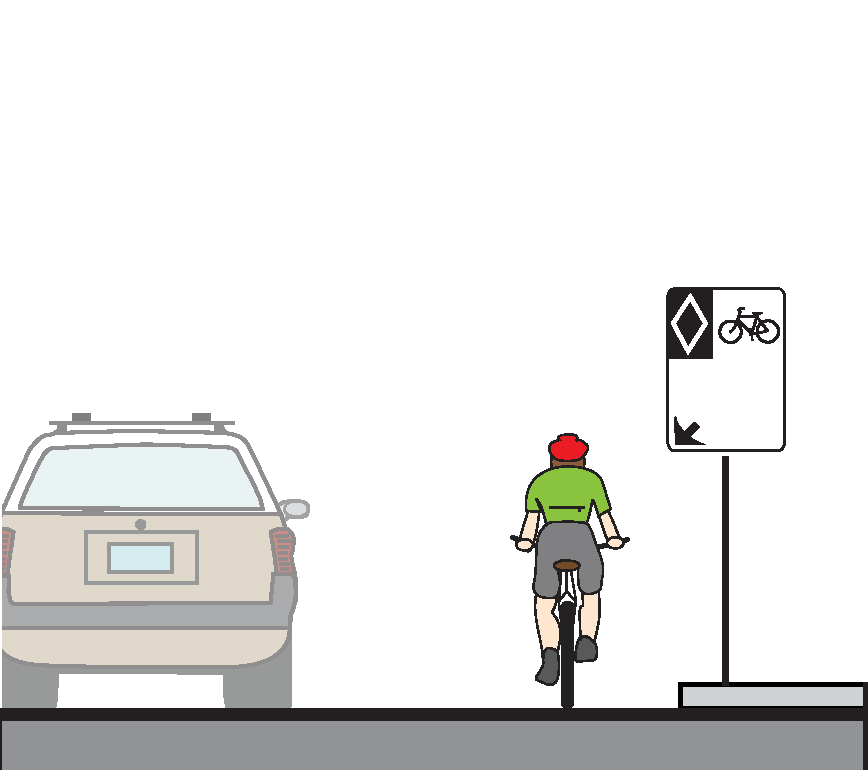
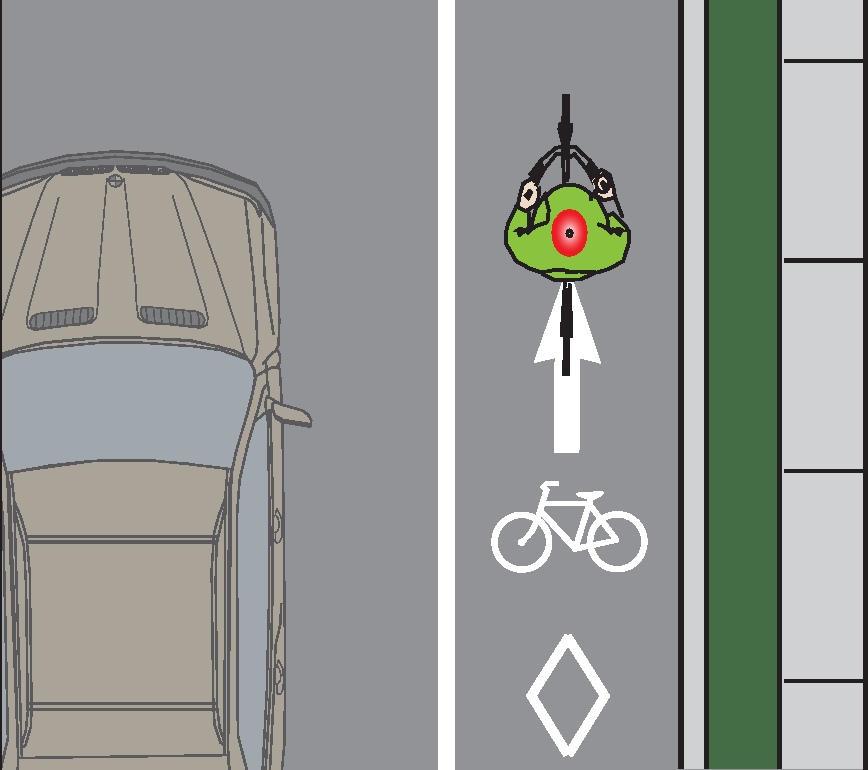
Buffered bike lane
Buffered bike lanes are installed on roads with higher traffic volumes and speed within the urban and suburban areas of a city. A 0.5m buffer is added to the existing 1.5m wide bike lane with or without collapsible bollards. This provides additional separation between cyclists and motor vehicles.
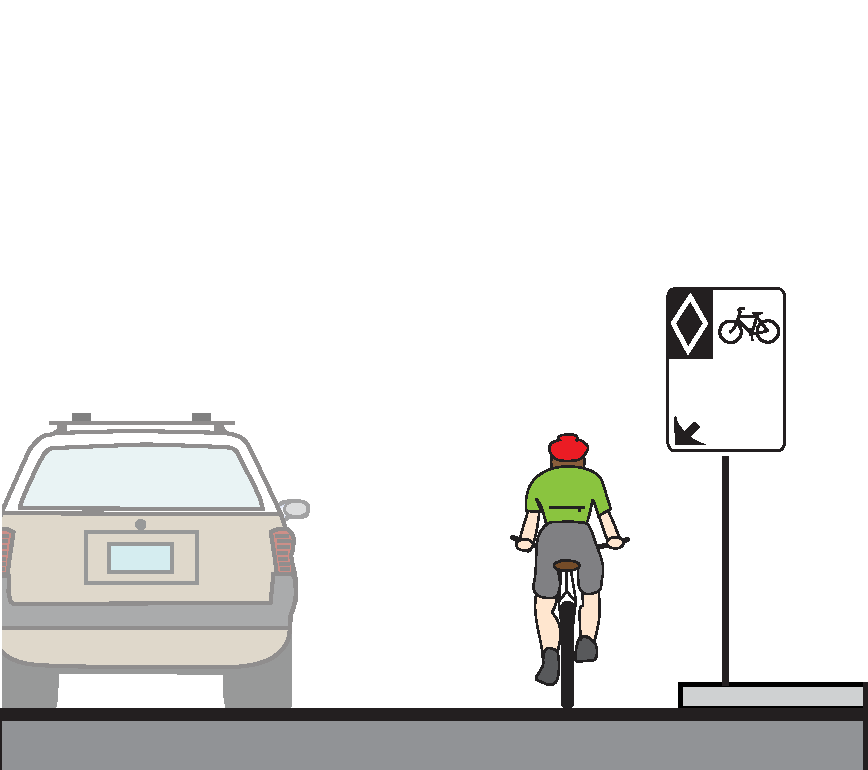
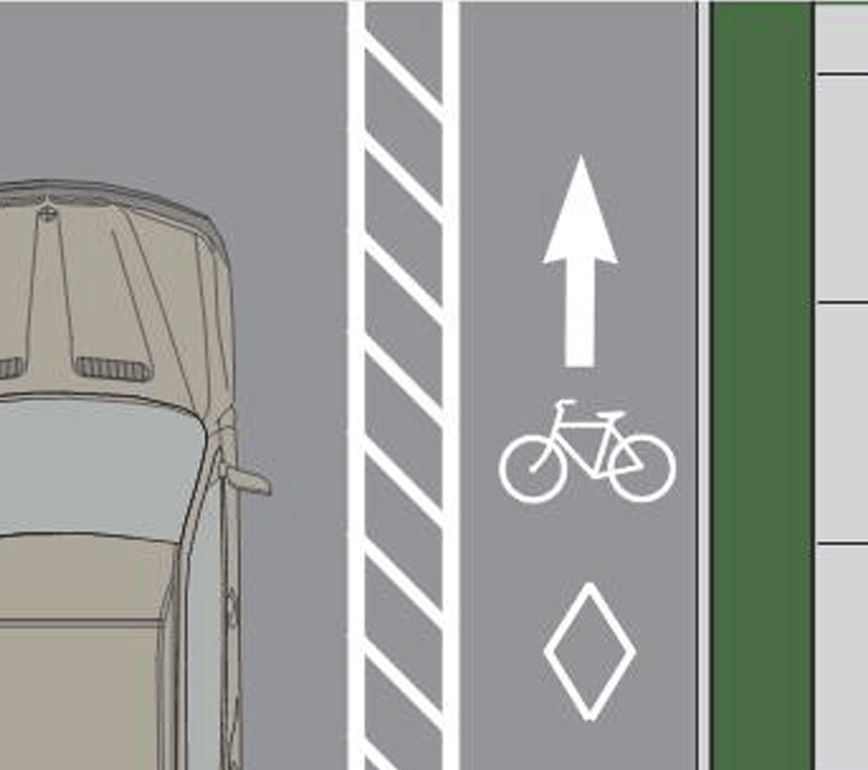
Bike boxes
Bike boxes are green-painted designated areas at signalized intersections that allow cyclists to move ahead of traffic into a safe and visible location when the traffic lights are red. Vehicles are required to stop behind the green bike box, and are not able to make right hand turns on red at intersections where bike boxes are present.
During green lights, intersections with bike boxes are treated as normal roadways. Cyclists have priority through the intersection when the light turns green.
Bike boxes significantly increase the visibility of cyclists, making motorists more aware of their presence. They are designed to make it easier and safer for a cyclist waiting at an intersection to make a left turn, rather than having to weave through traffic while trying to signal. Bike boxes also help to prevent drivers from making right turns in front of cyclists approaching from behind
This brief video below explains how to use bike boxes.
Crossrides
Crossrides are cycling facilities that work like crosswalks do for pedestrians. They allow cyclists to remain on their bikes and safely cross through an intersection. Crossrides are identified by thick, painted blocks on either side and white-painted bicycle symbols with directional arrows. They may also include green paint. Crossrides are commonly located next to pedestrian crosswalks and often have their own dedicated signal that lets cyclists know when they may enter the intersection. At smaller, unsignalized crossings, “mixed” cross-rides may be in the form of a shared bicycle and pedestrian crosswalk.
This brief video explains how crossrides work:
Cycle tracks
Cycle tracks are a separate space found between the motor vehicle lane and curb. Cycle tracks are appropriate on roads with high speeds and volumes. They can be bi- or uni-directional. Cycle tracks are 1.5m wide if unidirectional and 3m if bi-directional.
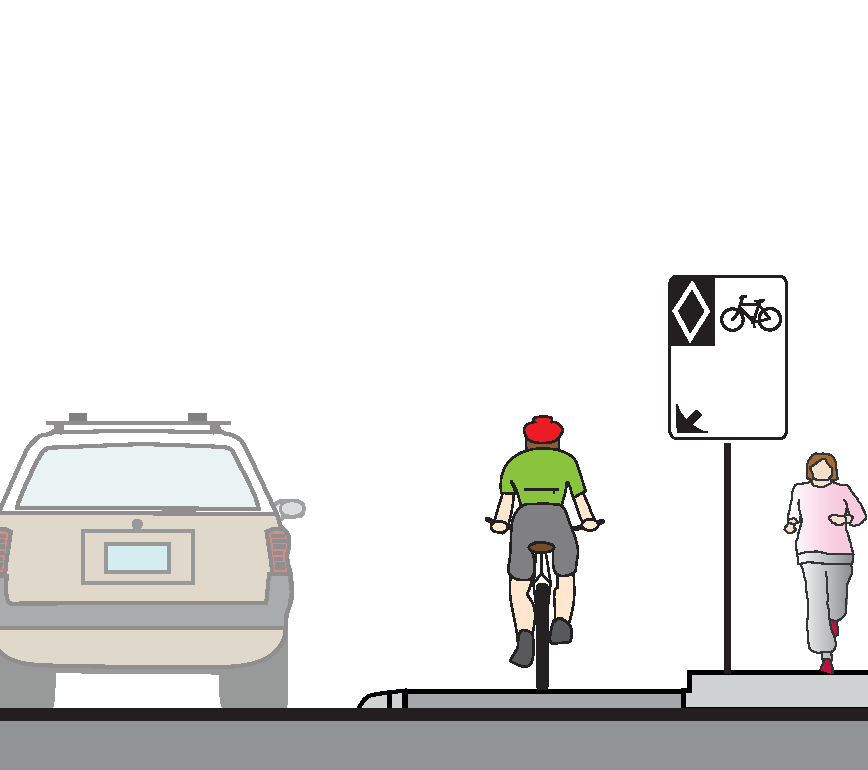
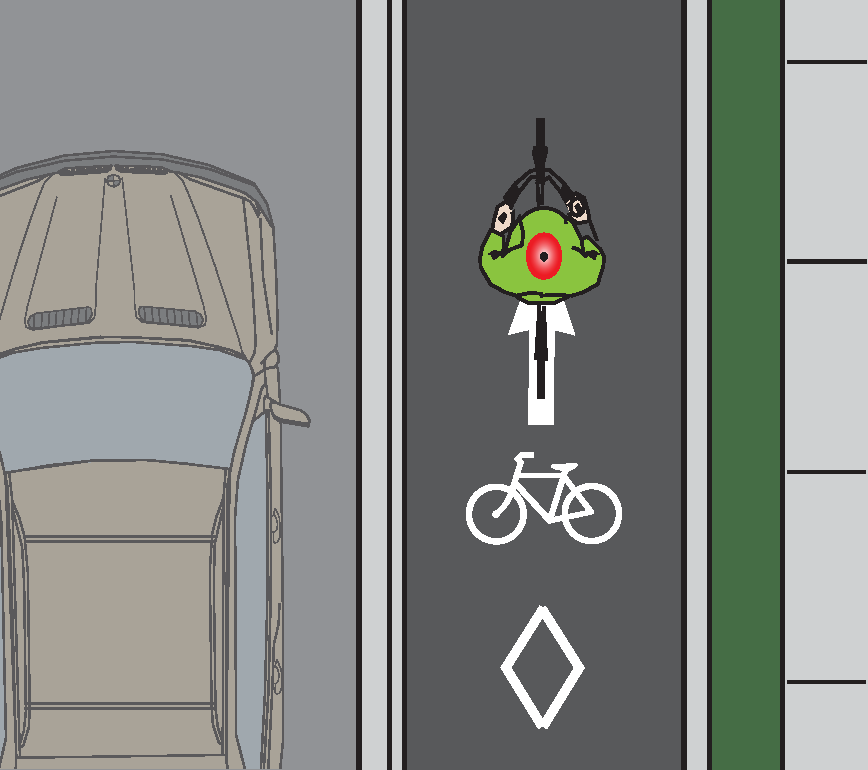
Signed bike route
Motorists and cyclists share the same vehicular travel lane on a signed bike route. Bicycle route signs are used to provide route guidance for cyclists and, at times, can be supplemented with share the road signs in areas of poor visibility. Signed bike routes are used on low volume, low speed roadways, such as residential streets.
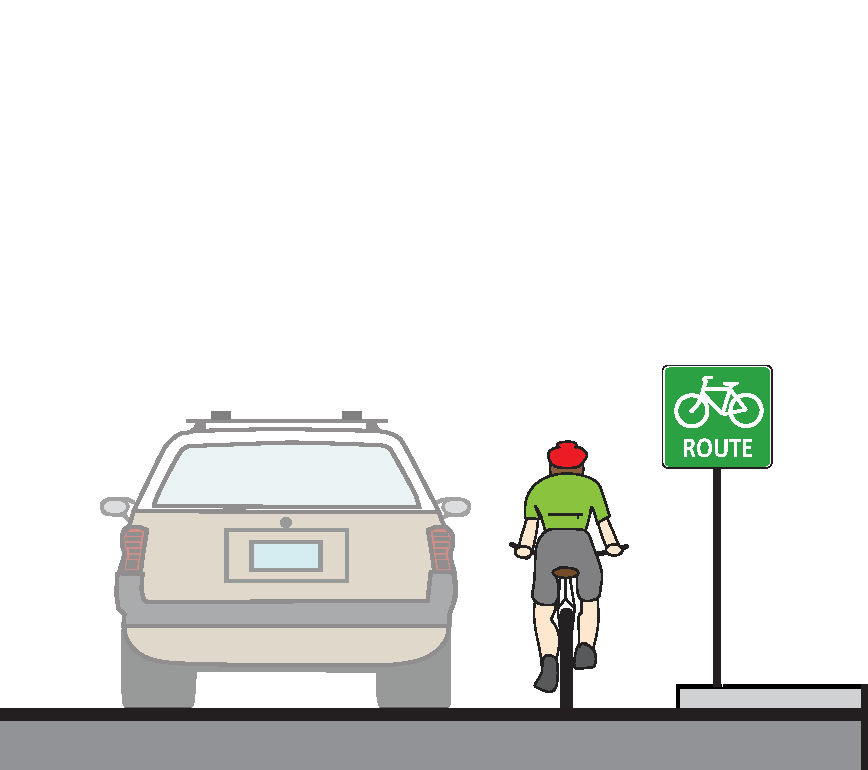
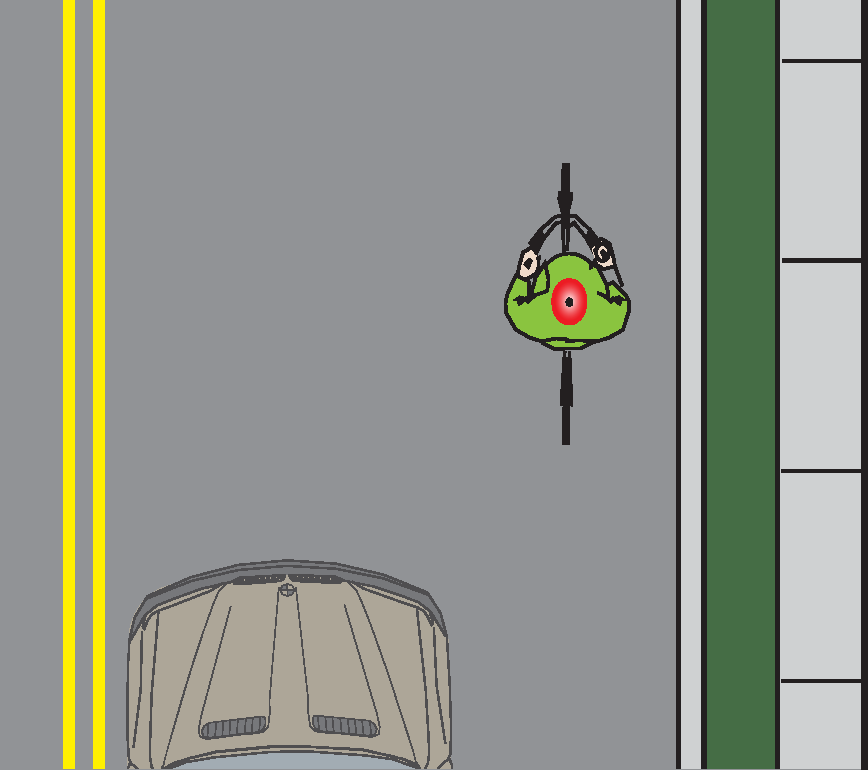
Paved shoulder
Paved shoulders provide a designated space on the road platform. Bicycle route signs are used to provide route guidance for cyclists and, at times, can be supplemented with share the road signs in areas of poor visibility. Paved shoulders are used on moderately busy roads with moderate speeds.
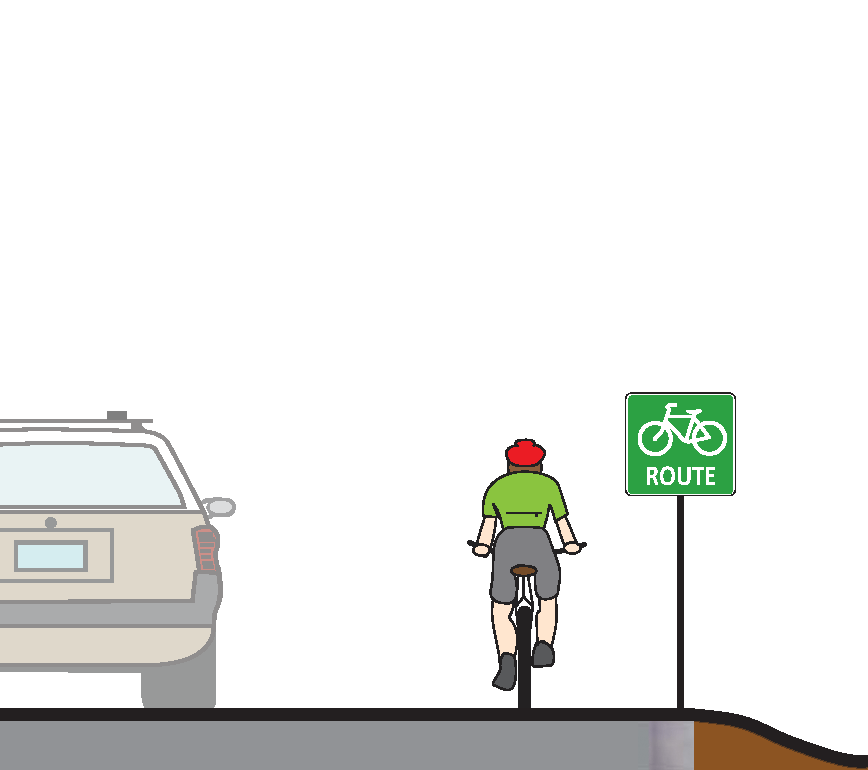
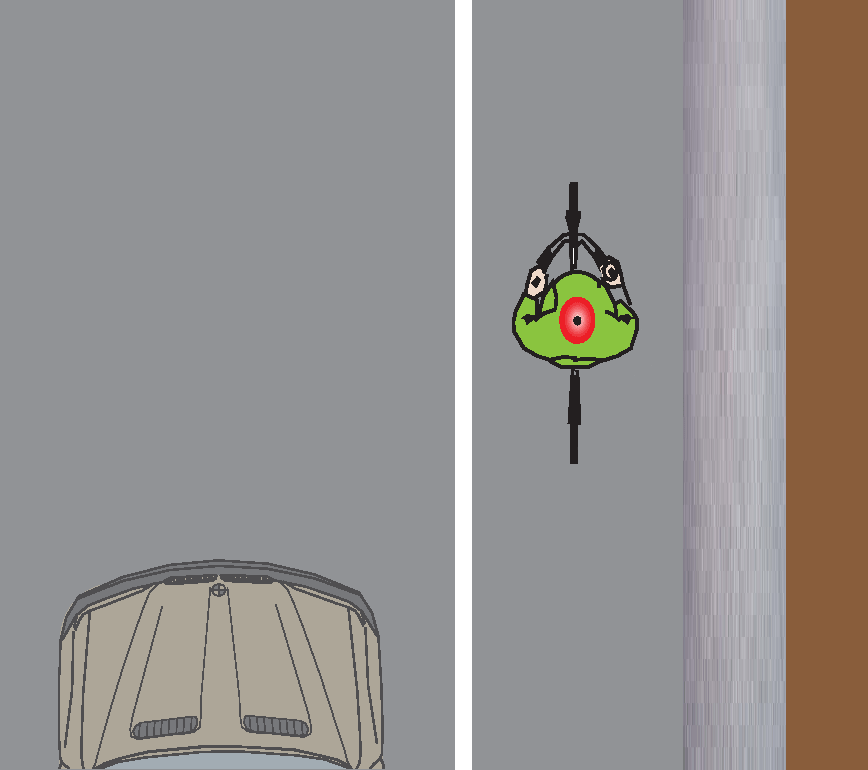
Buffered paved shoulder
Buffered paved shoulders are installed on roads with high volume and speed in rural areas of a city. A 0.5m buffer is added to the existing shoulder with the shoulder width dependent on speed and volume of the roadway. This provides additional separation between cyclists and motor vehicles. Buffered paved shoulders are signed as bicycle routes.
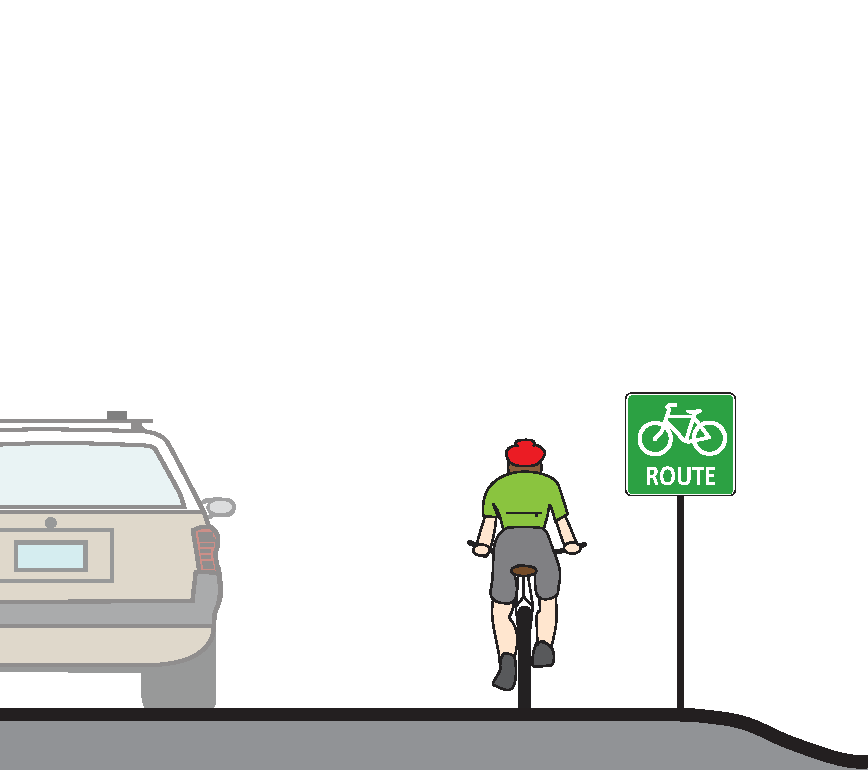
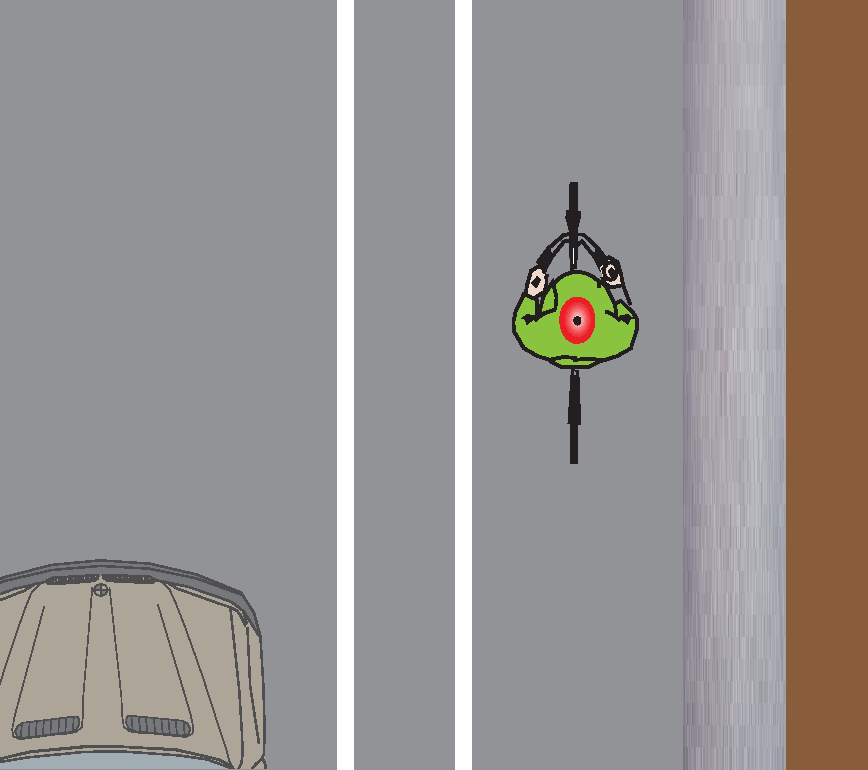
Off-road trail
Off-road trails are separated spaces, typically through a natural area or corridor, that accommodate pedestrians and cyclists. The surface type can range from natural surface to asphalt depending on the location. Both portions of the Waterfront Trail and the K&P Trail are examples of off-road trails.
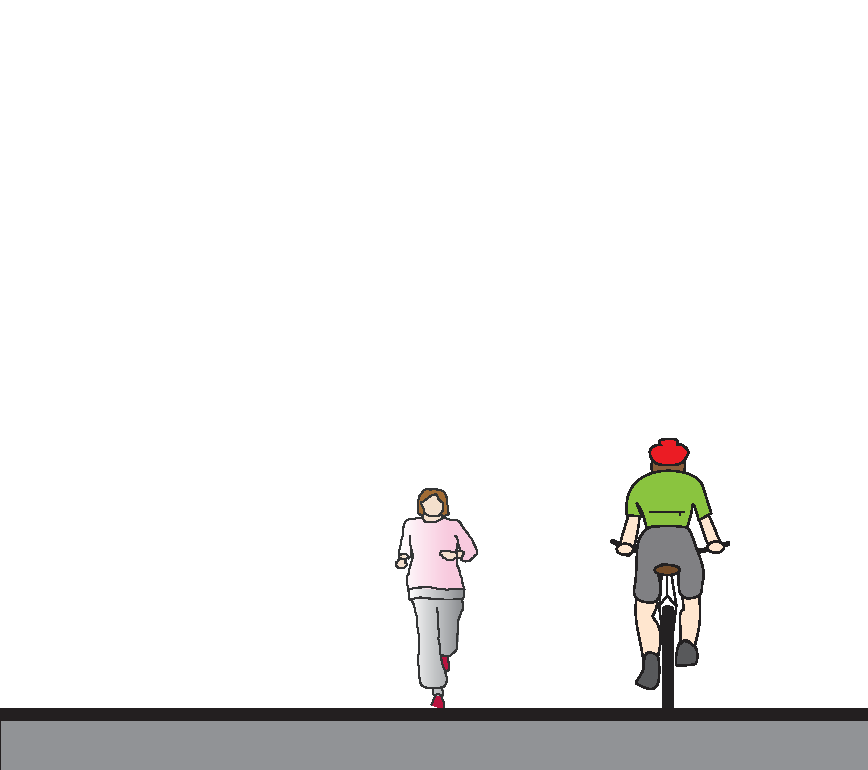
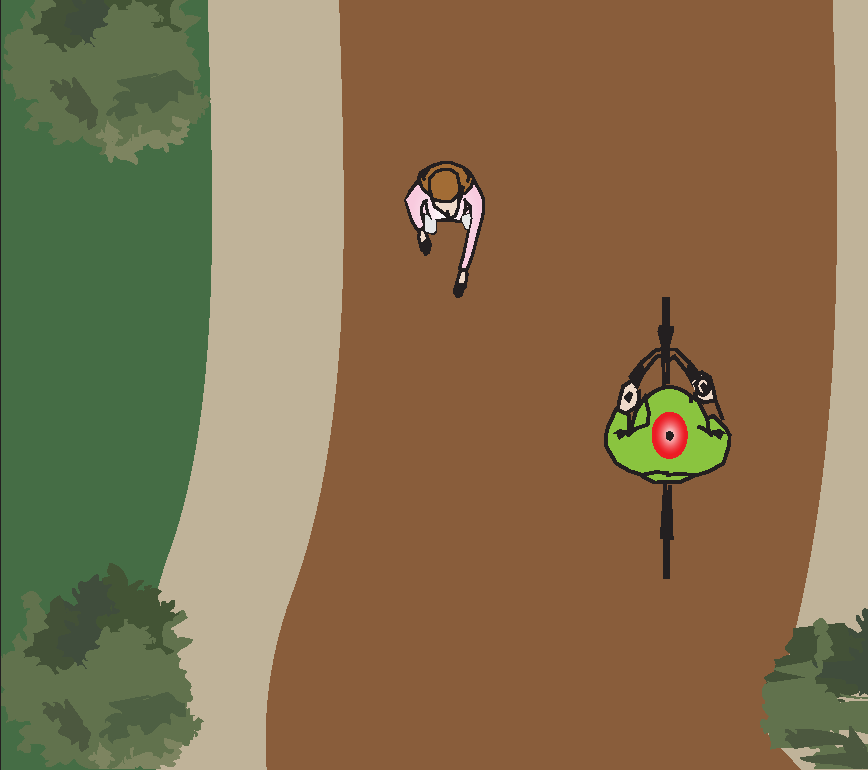
In-boulevard trail
In-boulevard trails are a separated space found within the boulevard of the roadway – in place of a sidewalk, which accommodates both pedestrians and cyclists in a shared space. In-boulevard trails can be either uni- or bi-directional. The Bath Road Bikeway, completed in fall 2018, is an example of an in-boulevard trail in Kingston
